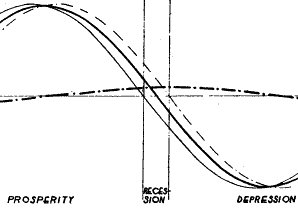|
Back The idea that the aggregate economy does not climb a steady trend but experiences occassional booms of activity and recessions is very old. Virtually every economist recognized the existence of strong fluctuations in the general level of economic activity - as exemplified in the debates on General Glut and the Marxian theory of crises. But the idea that it exhibits a regular cyclical pattern, that these fluctuations were recurrent in a precise periodic way, was only put forward late in the last century by William Stanley Jevons and Clement Juglar. The first theorists provided mostly "exogenous cycle" theories: relating economic cycles to other exogenous cycles found in "nature" such as weather which, in turn, might be affected by astral phenomenon. These natural phenomena, they argued, affected tangible things such as harvests and/or intangibles such as people's moods, and that these in turn were creating the fluctuations that were observed. As these natural phenomena had a cyclical nature, so then we see a corresponding economic cycle. Along these lines, William Stanley Jevons (1866, 1875, 1884) identified an economic cycle relating to sunspots - quite literally. Henry L. Moore had one based on weather cycles (1914) and another on the position of the planet Venus (1923). Johan ┼kerman (1928, 1932) had a more ingenious one connecting longer business cycles to the magnified effects of a series of small, weather-driven seasonal cycles.
|
All rights reserved, Gonšalo L. Fonseca

